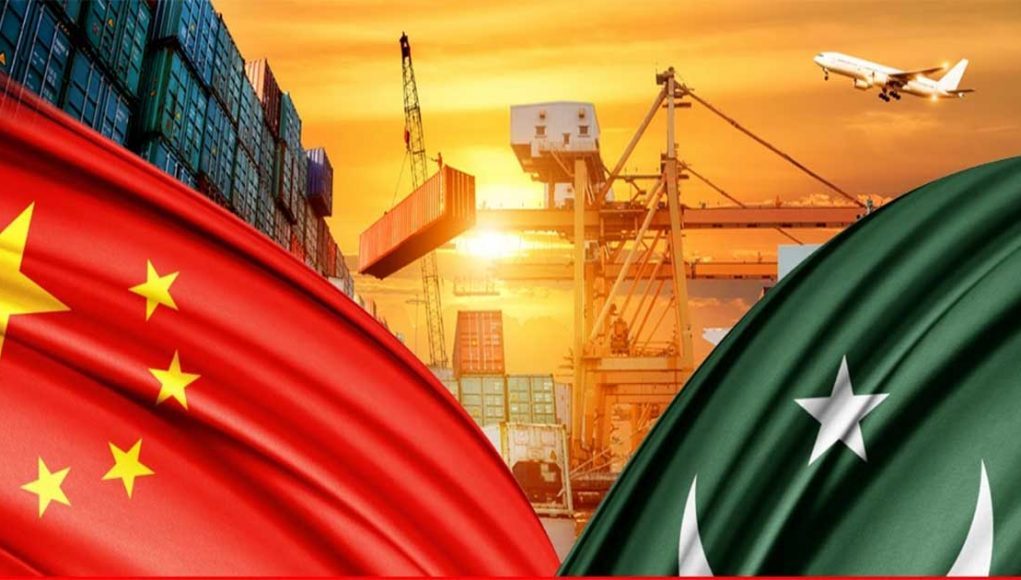By Daniela Lopez
(Editor’s Note: The writer is the Editor of Observer Diplomat an International Affairs and Diplomatic Magazine)
In the realm of regional connectivity and economic development, the China-Pakistan Economic Corridor (CPEC) shines brightly as a testament to the unwavering friendship between China and Pakistan. Initiated under President Xi Jinping’s visionary leadership, the CPEC is a vital component of the Belt and Road Initiative, aimed at fostering cooperation and enhancing trade between the two nations. Over the past decade, this ambitious initiative has transcended expectations, ushering in an era of unprecedented economic growth and infrastructural development. As we commemorate the 10-year milestone of the CPEC, it is paramount to highlight the numerous positive impacts and transformative achievements that have solidified the strategic partnership between China and its all-weather friend, Pakistan.
The China-Pakistan Economic Corridor has not only brought immense economic and infrastructural advancements to Pakistan but has also deepened the bonds of friendship and cooperation between China and Pakistan. Through strategic investments, capacity-building initiatives, and cultural exchanges, the CPEC has emerged as a beacon of progress, uplifting the people of both nations.
The CPEC’s significance stems from its function as a powerful accelerator for Pakistan’s economic growth. One of its most notable accomplishments has been in the energy sector, where it has effectively addressed the country’s chronic energy shortages. The CPEC has brought hundreds of megawatts of electricity into the national grid through strategic investments in varied energy projects such as coal-fired power plants and hydropower facilities.
This determined effort has resulted in a significant reduction in power interruptions, providing an atmosphere favourable to successful enterprises and industries. In a notable achievement, 14 power projects under the CPEC have been successfully commissioned, totaling 8,000 megawatts of installed capacity, significantly resolving Pakistan’s long-standing electricity scarcity. The steady energy supply has also piqued the interest of foreign investors, tempting enterprises to set up shop in Pakistan.
Furthermore, transportation infrastructure development has created new opportunities for economic growth and regional integration. Modern roads, highways, and motorways have facilitated the flow of goods and people across Pakistan’s many regions. The upgraded transportation network has decreased travel time and expenses while encouraging trade and business between provinces.
Economic Advancements and Infrastructure Development:
The CPEC has propelled Pakistan’s economy to new heights, opening doors to unprecedented growth and prosperity. Through the construction of highways, ports, and energy infrastructure, transportation and energy efficiency have improved significantly, creating numerous job opportunities for the Pakistani workforce. The Gwadar Port, in particular, has emerged as a game-changer, poised to become a regional hub for trade and investment. Its development, alongside the Gwadar Power Plant, Gwadar International Airport, and Gwadar Free Zone, has accelerated economic activities in the region, spurring job creation and attracting further foreign investment.
Energy Revolution and Socioeconomic Transformation:
Perhaps one of the most remarkable impacts of the CPEC lies in its contribution to resolving Pakistan’s energy crisis. The energy projects under the CPEC have acted as a lifeline, pulling the nation out of darkness. As a result, Pakistan now boasts a capacity to produce enough electricity to meet both industrial and domestic demands. This substantial progress has not only significantly improved the quality of life for the citizens but also bolstered the industrial sector, fostering an environment conducive to sustainable economic growth.
People-Centric Initiatives and Capacity-Building:
The CPEC is not solely about infrastructure and trade; it embodies a people-centric approach to development. Through capacity-building initiatives, Chinese companies have played a pivotal role in nurturing local talent. At the Sahiwal power plant, one Chinese company trained 245 engineers and 377 office or lower-level staff, while another trained 600 engineers and approximately 2,000 office and lower-level staff at Port Qasim. Moreover, the China State Grid Cooperation has contributed significantly by training over 5,000 employees in Pakistan. These endeavors have not only enhanced professional skills but have also bolstered cultural understanding and people-to-people ties between the two nations.
Strategic Cooperation and Friendship:
Beyond the tangible economic benefits, the CPEC has fostered a deep and enduring friendship between China and Pakistan. It has created an atmosphere of trust and collaboration, laying the foundation for a strong and strategic partnership. The bond between the two countries has extended beyond economic realms, encouraging people-to-people exchanges and cultural interactions. This increased understanding and mutual respect have further strengthened the ties of friendship, making China and Pakistan true all-weather friends.
The China-Pakistan Economic Corridor stands as a testament to the extraordinary potential of cooperation between nations. It has not only brought remarkable economic and infrastructural advancements to Pakistan but has also deepened the friendship and strategic partnership between China and its all-weather friend, Pakistan. Through a people-centric approach, the CPEC has nurtured local talent and empowered the workforce, while fostering cultural exchanges and mutual understanding. As we celebrate the 10-year milestone of this historic initiative, it is evident that the CPEC has transformed the region, bringing prosperity, connectivity, and friendship that will endure for generations to come.
















